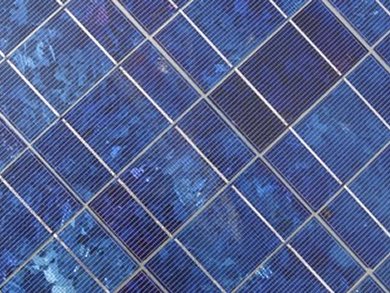Tremendous progress has been made in the development of solar cells based on panchromatic ruthenium dyes. The most efficient photosensitizer, the RuII polypyridine complex, achieves up to 11.4 % efficiency. However, one of the disadvantages of using Ru complexes is their limited absorption in the visible region. Thus, the hunt continues for new materials that can enhance the light absorption capability in this region and so enhance the overall efficiency.
Vivian Yam and co-workers, University of Hong Kong, China, have created a new class of molecular dyads comprising metalloporphyrin-linked alkynylplatinum(II) polypyridine complexes with carboxylic acids as anchoring groups. These complexes undergo charge transfer from the alkynylplatinum(II) terpyridine units to the metalloporphyrin units, giving them interesting electronic absorption and redox properties. UV/Vis absorption studies indicated that all of the complexes displayed intense absorptions in the high-energy region, more-intense absorption bands at about 420–450 nm, and less-intense absorptions in the low-energy region. All of the complexes could sensitize a nanocrystalline TiO2 electrode efficiently, as revealed by the excited-state redox potentials. These showed that the complexes were able to inject an electron into the conduction band of TiO2.

A dye-sensitized solar cell (DSSC) based on the best complex showed a short-circuit photocurrent of 10.1 mAcm–2, an open-circuit voltage of 0.64 V, and a fill factor of 0.52, giving an overall power conversion efficiency of 3.4 %. Although this value is not comparable with the RuII polypyridine complex, the team believes that this class of complexes may inspire new donor-acceptor metal-ligand chromophores and photosensitizers with improved properties.
- Molecular Dyads Comprising Metalloporphyrin and Alkynylplatinum(II) Polypyridine Terminal Groups for Use as a Sensitizer in Dye-Sensitized Solar Cells,
Eric Chi-Ho Kwok, Mei-Yee Chan, Keith Man-Chung Wong, Vivian Wing-Wah Yam,
Chem. Eur. J. 2014.
DOI: 10.1002/chem.201304051
Also of interest:
- Women in Chemistry — Interview with Vivian Yam,
Vera Köster,
ChemViews Mag. 2011.
DOI: 10.1002/chem.201304051




